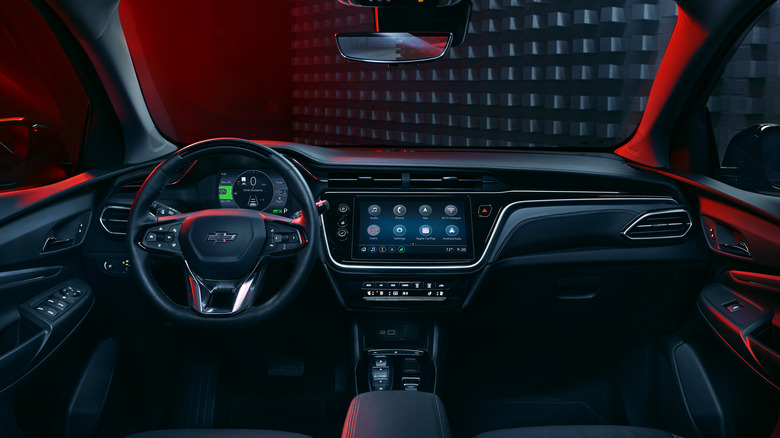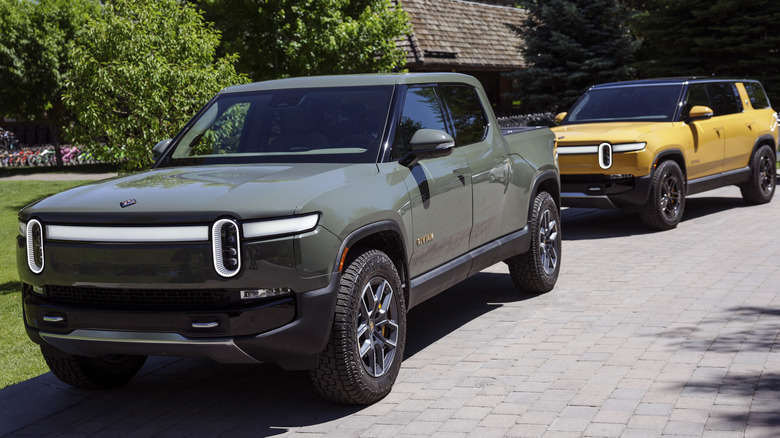The Secret Emergency Brake In Most Electric Vehicles
Modern cars are full of safety features that work to prevent the driver, passengers, and pedestrians from getting injured. There are basic systems like air bags and seatbelts, and more advanced features like automatic emergency braking, blind spot monitoring, lane-assist, and a ton more. Cars are safer now than they have ever been.
Cars also have built in mechanisms that prevent the car from damaging itself if the driver does something unexpected. Many cars automatically lock the doors when in drive so the doors don't fly open while driving. If the driver were to accidentally slam the gear selector into park while driving, most modern automatic transmissions have mechanisms in place to prevent the transmission from doing its best impression of a grenade (via AutoVlog).
Electric vehicles, however, do not have the same multi-speed automatic transmission that most gasoline-powered cars have. Most EVs have a single-speed transmission going from the electric motor to the wheels. So what happens if you shift into park while driving an EV?
Technology keeping you safe
Fortunately, like modern cars, the vehicle itself is unlikely to be harmed by an errant press of the "P" gear selector button while driving. According to The Drive, repeated or long presses of the park button actually activate a built-in emergency braking function. This is a feature on just about every modern EV on the market, and these systems all work in roughly the same way.
The transmission uses a system of ratcheting levers to slow down the motors output in a way that doesn't hurt the driver themselves, or the motor (via The Drive). The Drive also notes that while Tesla uses its braking system to halt the car instead of the ratcheting levers, the feature works in much the same way.
Driving purists may bemoan buttons to select gears, and the lack of physical connection or "feel" from an EV transmission. But for most drivers, it's packed full of safety features and programming that allows it to process input and manage output to the wheels exponentially faster than a human could. That makes for a safer driving experience for everyone on the road, and keeps the car itself in good working mechanical order.

